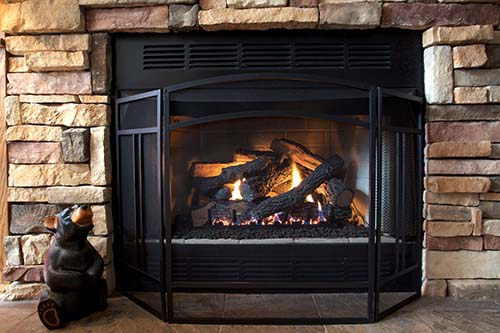Gas fireplaces provide reliable warmth and ambiance with the flick of a switch, but like any appliance, they require proper upkeep to stay efficient and safe. With changing weather conditions and seasonal usage patterns, gas fireplace maintenance should be part of your regular home care routine. Ignoring this can lead to performance issues, reduced efficiency, or even safety hazards. These seasonal tips will help homeowners protect their investment and enjoy a comfortable indoor environment throughout the year.

Spring Shutdown: Post-Season Maintenance Matters
Once winter has passed and your fireplace usage drops off, it’s time to focus on shutting the system down properly. Spring is ideal for assessing the overall condition of the fireplace and addressing any buildup that may have occurred during heavy use.
Key maintenance actions include:
- Turn off the pilot light: If your unit has a standing pilot, turning it off can conserve gas over the summer.
- Clean the glass panel: Remove soot and film with a manufacturer-approved cleaner to prevent etching and restore visibility.
- Inspect the logs and burner: Dust or spider webs can affect performance. Ensure nothing is blocking gas flow or obstructing components.
- Check for gas smells: Any lingering odors after shutdown should be investigated immediately by a licensed technician.
Addressing minor issues now will help avoid larger repairs when colder temperatures return. If you notice recurring problems such as strange odors or pilot light issues, refer to these common gas fireplace problems for further insight into what could be going wrong.
Summer Readiness: Prepare for Inactivity
Even when not in use, your gas fireplace needs attention during the summer. High temperatures, humidity, and insects can all affect the system’s internal components.
Use this checklist to keep your fireplace in good shape:
- Seal the unit if possible: Keeping the firebox sealed prevents dust and pests from settling inside.
- Dust exterior surfaces: Regular dusting of the mantel and frame maintains cleanliness and detects early signs of corrosion.
- Test carbon monoxide detectors: Functional alarms are essential even when the fireplace is dormant.
- Check the wall switch or remote: Make sure any electronic components haven’t corroded or failed due to disuse.
Insects, especially spiders, are attracted to gas lines and vents. Regular checks during summer help prevent blockages that could hinder ignition in fall.
Fall Preparation: Getting Ready for Heating Season
Fall is the most critical time for gas fireplace maintenance. Before lighting the first fire of the season, a thorough inspection ensures that all parts of the system are clean, safe, and functioning as intended.
A fall readiness routine should include:
- Visual inspection of the flue or venting system
- Checking gas connections for leaks
- Ensuring ignition systems operate correctly
- Cleaning the fan and air circulation pathways, if equipped
This is also the ideal time to schedule a professional inspection. An expert will verify system performance and may uncover issues that are difficult to detect on your own. Remember, any installation or repair work should follow proper guidelines. The importance of professional installation cannot be overstated when dealing with gas appliances.
Winter Monitoring: Safe Use During Peak Months
Once winter arrives and your fireplace is in regular use, continued monitoring is essential. While much of the heavy maintenance should already be complete, attention to daily performance helps spot developing issues early.
Stay on top of winter usage by:
- Checking flame color regularly: A steady blue flame indicates clean burning, while yellow or flickering flames may signal a problem.
- Keeping the area around the fireplace clear: Flammable materials should never be near the appliance.
- Inspecting for soot buildup: Soot on logs or glass can signal incomplete combustion.
- Listening for unusual sounds: Popping or hissing may indicate venting or gas flow issues.
By tracking changes in appearance, sound, or function, you’ll know when to call for service before a minor issue becomes a shutdown situation.
General Best Practices for Year-Round Care
While each season brings different needs, some gas fireplace maintenance tips apply throughout the year. Consistency in care helps extend the life of your unit and ensures you get the best performance when it matters most.
Best practices include:
- Scheduling annual inspections: At least once a year, have a qualified technician evaluate all parts of the system.
- Using only recommended cleaning products: Harsh chemicals can damage finishes and leave harmful residue.
- Following manufacturer instructions: Every unit has unique features; never assume one-size-fits-all maintenance applies.
- Watching for warning signs: Odors, noises, or inconsistent heat output are all reasons to call in an expert.
Proper care involves more than aesthetics or function; it ensures that your gas fireplace remains a safe and reliable source of comfort for your home.
Stay Warm, Stay Safe
Whether you’re preparing for winter or winding down for spring, consistent gas fireplace maintenance helps prevent costly repairs and ensures safe use. For expert servicing and peace of mind, contact The Gas Connection and keep your fireplace in top condition all year long.